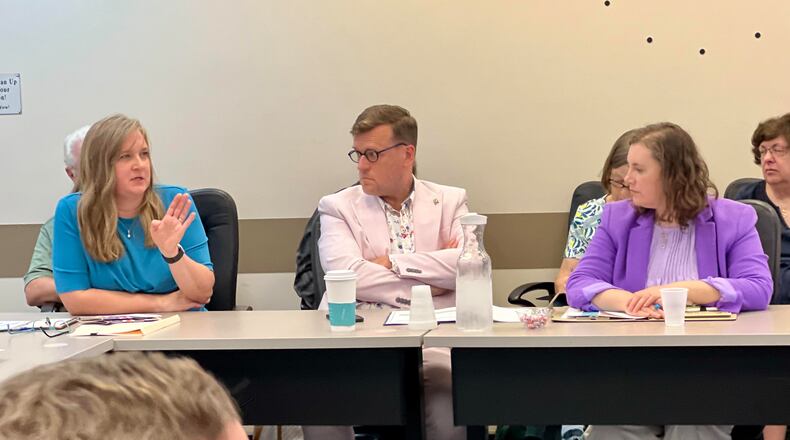The funds will be split (not evenly) between the four libraries in the county — the 17-branch Dayton Metro Library system, the Germantown Public Library, Oakwood’s Wright Memorial Public Library, and the two-branch Washington-Centerville Public Library.
Dayton Metro Library officials have questioned these funding estimates, saying in the current year, they project getting $1.6 million less from the state than the Budget Commission said. Dayton Metro Library is seeking voter approval of a new 5-year, 1-mill property tax levy this November.
Breakdown, funding error
The county’s budget commission determines the percent of funding each library branch receives through a formula that gauges the library district’s population, the number of cardholders they have and the square-footage of their buildings.
Dayton Metro Library is set to receive around 78% of the allocated funds for next year, or an estimated total of around $19.9 million. Washington-Centerville will receive an estimated $3.1 million, or around 12% of the allocation.
The Wright Library will receive about 5% of the funds, an estimated $1.3 million, and Germantown will receive just under $800,000, which is 3% of the total allocation.
But due to a county-level error , traced to spreadsheet formatting, the Washington-Centerville Public Library did not receive its full allocation of funds in recent years.
“It looks like we shorted Washington-Centerville by about $500,000 over the last two years,” said Larry Hartlaub, director of tax and finance with the auditor’s office.
Meanwhile Germantown was overpaid by $100,000; Wright Library by $85,000; and Dayton Metro Library by about $300,000, Hartlaub said.
Library representatives on Thursday said they appreciate the commission catching the error and do not object to the five-year solution plan.
Funding concerns remain
Roughly 51% of the total funding for Ohio’s public libraries comes from the state through the Public Library Fund, according to the Ohio Library Council, an organization that advocates for public libraries. In the state budget, the Public Library Fund gets 1.7% of the state’s general revenue fund.
Both budget commission and library officials stressed that the projected allocations are only estimates, as funding is based on a consistently varying collection system.
The general revenue fund receives more than two-thirds of its money from sales and income taxes — two revenue sources that are variable, budget commission officials say.
“As the state continues to cut revenue sources, it impacts both the library fund and the local government fund, so we’re all painfully aware of what’s going on, and our concern is that it’s going to get worse,” said Montgomery County Auditor Karl Keith during Thursday’s meeting.
“There are local legislators and legislators around the state who want to eliminate the state income tax completely, and those types of proposals would certainly have a detrimental effect on local government throughout Ohio,” Keith added, alluding to a proposal floated by lawmakers earlier this year to reduce Ohio’s personal income tax down to zero over a six-year time frame.
Credit: Marshall Gorby
Credit: Marshall Gorby
DML questions amounts
Dayton Metro Library is the only one of the four libraries seeking a new tax levy in November. DML Executive Director Jeffrey Trzeciak said his finance office projects DML getting $1.6 million less in Public Library Funding than the $19.9 million the commission estimated.
Trzeciak said of the current year’s monthly distribution payments, all but one have come in lower than originally estimated.
“And to put that in perspective, $1.6 million is the cost for us to run two of our branches,” Trzeciak said.
DML Fiscal Officer Hilary Browning estimated 2024 revenue at about $34 million, with around 56% coming from the Public Library Fund. She said DML is projected to post a $5.5 million deficit for 2024, which will be covered by declining cash reserves.
“This is why we’re going forward with a ballot initiative in November, and we have also taken extraordinary actions to cut costs this year,” Browning said, referring to cuts they estimated at $2.7 million.
About the Author




